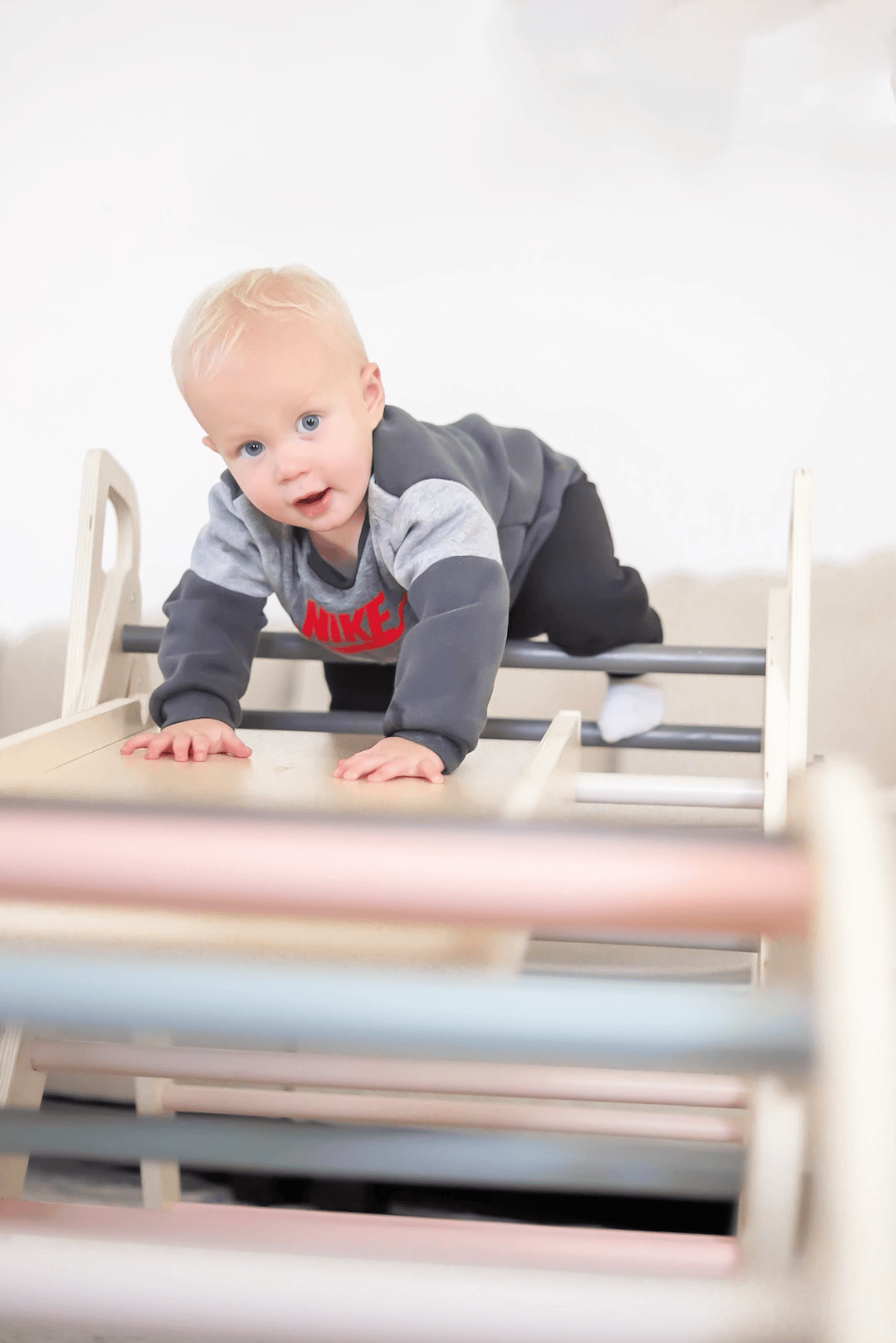How Does an Indoor Jungle Gym Cultivate Emotional Resilience in Children Aged 3+?
What is a Jungle Gym?
The term "Jungle Gym" originated in the United States in the 1920s, invented by a teacher. Initially constructed from metal rods, it allowed children to climb and maneuver as if navigating a "jungle," hence the name. As educational philosophies evolved, modern Jungle Gyms transitioned from metal to safer, more natural wooden structures, incorporating slides, rope nets, climbing walls, and swings for diverse play. It is not just physical equipment but a "mini adventure park" for exploration, creativity, and social interaction. Jungle Gyms can be found in parks, community playgrounds, etc. Indoor Jungle Gyms emerged to provide similar experiences during rainy, hot, or snowy days.
At BlueWood, we draw inspiration from the spirit of jungle exploration to create Safari Land - BlueWood® Indoor Jungle Gym series. "Safari," meaning "African expedition," symbolizes children's innate curiosity and desire to explore. Kids can safely embark on thrilling adventures at home, climbing, swinging, and sliding, experiencing novelty and excitement at every turn. Its open and engaging design allows children to build physical strength, coordination, confidence, and emotional resilience through exploration, turning every play session into a mini "expedition" with outdoor-like growth experiences indoors.

Key Developmental Skills: How Indoor Jungle Gyms Support Emotional Growth
For children aged 3+, this is a critical period for emotional recognition and regulation as they begin encountering social conflicts, task-related setbacks, or competitive pressures. Emotional resilience—the ability to adapt to and recover from stress—is vital for mental health. Indoor Jungle Gyms combine physical challenges with psychological growth, offering opportunities to "learn emotional management through play."
Autonomous Exploration and Confidence
The diverse structures of Jungle Gyms (e.g., "climbing to the top via rope nets" or "sliding down from high platforms") empower children with autonomy. For instance, when attempting a high slide for the first time, they observe whether their grip or footing is secure. Such independent decision-making fosters confidence in "taking control," with each successful ascent or smooth slide reinforcing their sense of capability and willingness to tackle new challenges.
Risk Assessment and Problem-Solving
The "moderate difficulty" of Jungle Gyms (e.g., climbing walls or rope ladders) encourages children to think: "Will I fall if I stand like this?" or "Would shifting my grip make me steadier?" When mistakes occur (e.g., slipping or losing balance), they spontaneously adjust their approach. This "problem-identification-resolution" cycle practices staying calm and adaptable when faced with unexpected situations, skills transferable to real-life difficulties.
Coping with Frustration and Emotional Regulation
Mistakes during climbing or sliding (e.g., falling or wobbling) may lead to frustration or tears, but the safety design of Jungle Gyms allows adults to delay intervention. Most children, after brief distress, typically try again. This "attempt-fail-retry" process helps them recognize emotions, practice deep breathing, adjust strategies, and understand the value of persistence.
Emotional Learning Through Social Play
When multiple children use the Jungle Gym together, scenarios like "taking turns on the slide" or "helping a peer swing" naturally arise. They learn to empathize with peers' emotions (e.g., offering support when a friend is scared) and grasp the importance of rules while waiting. Such interactions teach them to balance "self-needs" with "others' boundaries."
Practical Activity Designs
Beginner Level
- Little Explorer: Lay soft mats indoors and encourage children to crawl, climb, or stand freely. Use affirming language like, "You found a new way to play!" to reinforce exploration.
- Treasure Hunt: Place small, colorful items on different platforms or climbing points and guide children to "collect the red ball," fostering patience and goal-orientation.
Advanced Level
- Obstacle Challenge: Combine climbing walls, rope nets, and ladders to set a task like "reaching the safe zone from the top." Encourage children to plan routes, enhancing problem-solving skills.
- Role-Play: Simulate scenarios like "monkeys climbing trees" with added challenges such as simulated wind or obstacles, helping children practice handling unexpected events and maintaining emotional stability.
Parental Role: Creating a Safe Environment for Exploration
- Environment Preparation: Check soft mats, guardrails, and surrounding safety. Include low obstacles to help children learn to navigate distractions independently.
- Language Guidance: Use open-ended questions instead of direct instructions, e.g., "Do you want to start here or there?" When children face setbacks, respond with, "You seem upset. Do you need a break before trying again?" to help them identify and express emotions.
Expert Insights

Montessori emphasized the link between movement and cognition, viewing autonomous exploration as fundamental to children's cognitive and emotional development.
Psychologist Alison Gopnik notes that young children rehearse future challenges through play, which helps them understand cause-and-effect and develop problem-solving skills.
Research from the National Association for the Education of Young Children (NAEYC) shows that children who engage in age-appropriate risk-taking play benefit in cognitive, emotional, and resilience development, and climbing toys such as a Jungle Gym provide a safe space for children to practice these explorations.
Conclusion: Let Growth Happen Naturally Through Exploration
Emotional resilience is not "taught" but "experienced": on Jungle Gyms, children learn to make decisions, handle small setbacks, and understand that it’s okay to start over after feeling sad. Parents need only provide safe boundaries and let go of excessive protective anxiety, allowing free exploration.
Want your child to brave challenges and build confidence? BlueWood Indoor Jungle Gym offers a safe, enriching space for them to try, fall, and rise again, naturally strengthening both body and emotional resilience. Create a "mistake-friendly, try-again" play area for your child today, and let exploration become a joyful source of growth!


Leave a comment